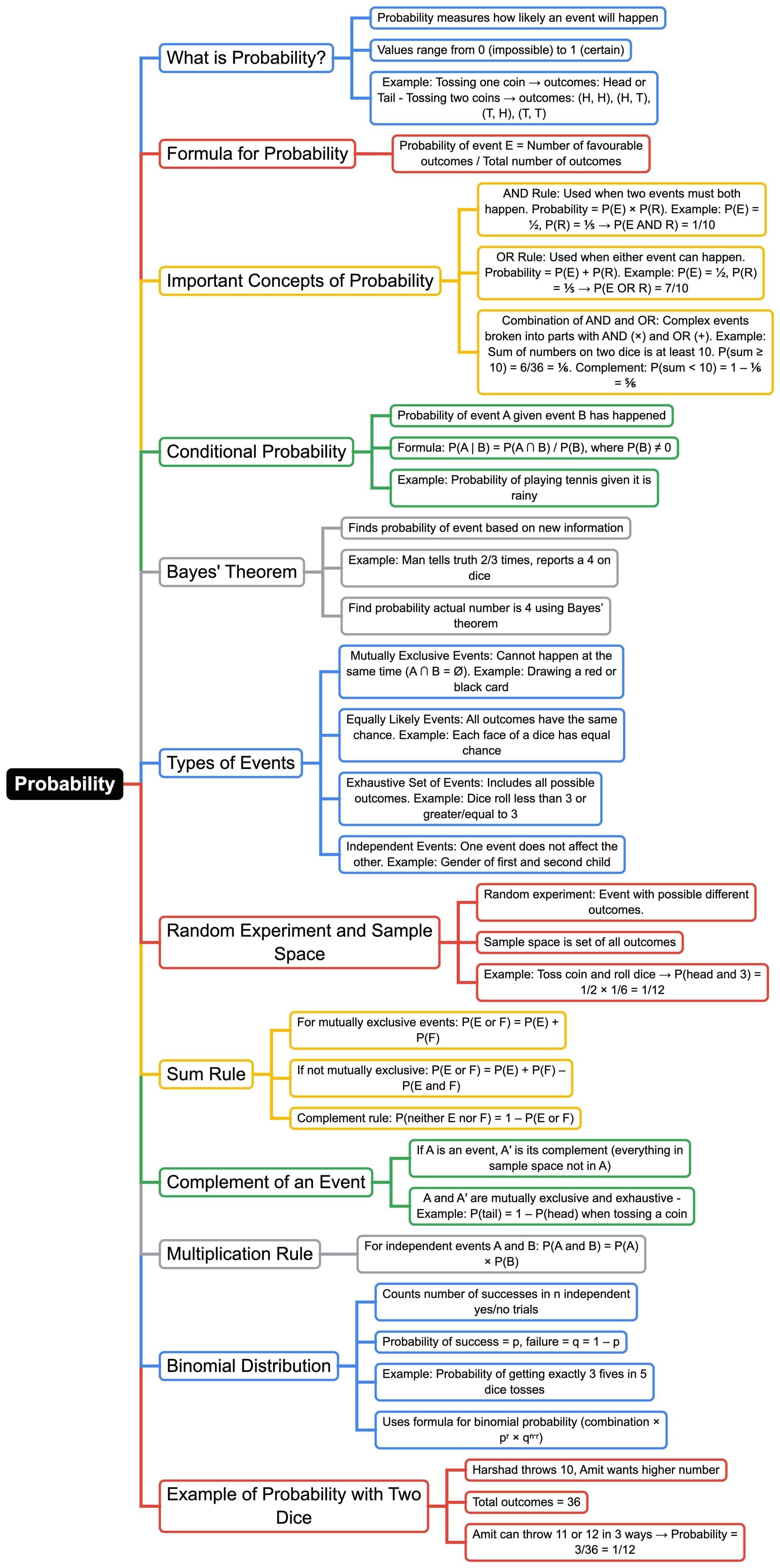CAT Exam > CAT Notes > Quantitative Aptitude (Quant) > Mind Map: Probability
Mind Map: Probability | Quantitative Aptitude (Quant) - CAT PDF Download

The document Mind Map: Probability | Quantitative Aptitude (Quant) - CAT is a part of the CAT Course Quantitative Aptitude (Quant).
All you need of CAT at this link: CAT
|
167 videos|229 docs|95 tests
|
FAQs on Mind Map: Probability - Quantitative Aptitude (Quant) - CAT
| 1. What is the importance of probability in the CAT exam? |  |
Ans. Probability is a crucial topic in the CAT exam as it assesses a candidate's ability to analyze uncertainty and make informed decisions. Questions on probability often appear in the Quantitative Aptitude section, testing concepts such as basic probability rules, permutations, combinations, and real-world applications of probability. A solid understanding of probability not only helps in scoring well but also enhances logical reasoning skills.
| 2. What are the basic concepts of probability that candidates should understand for the CAT? |  |
Ans. Candidates should grasp several fundamental concepts of probability for the CAT exam, including:
1. Sample space and events
2. Types of probability (theoretical, experimental, and subjective)
3. Addition and multiplication rules
4. Conditional probability and independence
5. Bayes' theorem
Understanding these concepts is essential for solving probability-related problems efficiently.
| 3. How can I improve my problem-solving skills in probability for the CAT exam? |  |
Ans. Improving problem-solving skills in probability can be achieved through several strategies:
1. Practice a variety of problems from previous CAT papers and mock tests.
2. Study and understand the underlying principles of probability rather than just memorizing formulas.
3. Use visual aids such as Venn diagrams or probability trees to conceptualize problems.
4. Seek help from study groups or online forums to clarify doubts and learn different approaches.
Consistent practice and a solid understanding of concepts will greatly enhance performance.
| 4. Are there any common mistakes to avoid while solving probability questions in the CAT exam? |  |
Ans. Yes, there are several common mistakes to watch out for:
1. Misunderstanding the problem statement, leading to incorrect assumptions.
2. Failing to account for independent and dependent events correctly.
3. Neglecting to simplify fractions or expressions, which can lead to calculation errors.
4. Overlooking the total number of outcomes when calculating probabilities.
Being aware of these pitfalls can help candidates avoid unnecessary mistakes and improve their accuracy.
| 5. How are permutations and combinations related to probability in the context of the CAT exam? |  |
Ans. Permutations and combinations are fundamental concepts that underpin many probability problems. They help in calculating the number of ways events can occur, which is critical for determining probabilities. In the CAT exam, understanding the difference between permutations (ordered arrangements) and combinations (unordered selections) allows candidates to effectively solve complex probability questions involving selection and arrangement of objects. Mastery of these concepts is essential for tackling advanced probability problems.
Related Searches





















